Recent Mold Remediation Posts
Mold Damage Restoration After Water Damage in Layton, UT: Acting Quickly to Avoid Further Issues
9/24/2024 (Permalink)
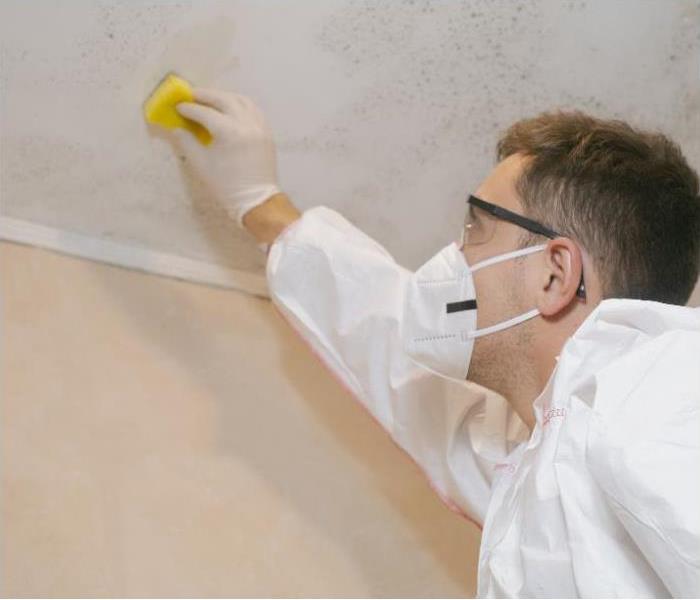 Mold Damage Restoration in Layton, UT
Mold Damage Restoration in Layton, UT
When water damage occurs in your home in Layton, UT, the urgency of addressing the problem cannot be overstated. Beyond the immediate concerns of drying out and repairing the damage, there's an additional threat that lurks in the shadows—mold. Mold growth is a common consequence of water damage, and it can have serious implications for both your home and health. Understanding how to act swiftly and effectively can make a significant difference in preventing and managing mold damage. Here's a comprehensive guide to mold damage restoration and how to minimize further damage.
Understanding the Risks of Mold
Mold thrives in moist, warm environments, and water damage creates the perfect conditions for its growth. In Layton, UT, where humidity levels can vary and heavy rains are not uncommon, homes are particularly susceptible to mold issues. Mold can begin growing within 24-48 hours of water damage, making quick action essential to prevent it from spreading.
Mold can affect various surfaces and materials, including wood, drywall, carpet, and insulation.
8 steps for Effective Mold Damage Restoration
Immediate Action: Addressing Water Damage
The first step in mold damage restoration is to address the source of the water damage. Whether it's a burst pipe, a leaky roof, or flooding from heavy rains, identifying and repairing the source of water intrusion is critical. Without resolving the root cause, any restoration efforts will be futile.
1. Ensure Safety and Contain the Area
Before starting any cleanup, ensure the area is safe. If the water damage is extensive, there may be electrical hazards or structural issues. Turn off the electricity to the affected areas if it's safe to do so. Use protective gear such as gloves, masks, and goggles to avoid direct contact with contaminated materials.
Contain the affected area to prevent mold spores from spreading to other parts of your home. Use plastic sheeting or other barriers to isolate the contaminated zone.
2. Remove and Dispose of Damaged Materials
Materials that have been severely damaged by water and cannot be thoroughly cleaned should be removed and disposed of. This includes items like soaked carpets, drywall, and insulation. Mold can quickly grow on these materials, so removing them reduces the risk of further contamination.
3. Dry Out the Area
Drying out the affected area is a crucial step in preventing mold growth. Use dehumidifiers, fans, and ventilation to reduce moisture levels. Ensure that all surfaces, including walls, floors, and furniture, are completely dry. In some cases, professional drying equipment may be necessary to achieve optimal results.
4. Clean and Disinfect
Once the area is dry, clean and disinfect all surfaces that were affected by water. Use a mixture of water and detergent to scrub surfaces, and follow up with a disinfectant to kill any remaining mold spores. For non-porous surfaces, this process is usually sufficient. However, porous materials that have absorbed water, such as wood or drywall, may require more extensive treatment or replacement.
5. Inspect for Mold Growth
After cleaning, inspect the area for any signs of mold growth. Look for discoloration, musty odors, or visible mold colonies. If you notice any mold, it's important to address it promptly. Small mold patches can often be cleaned with a mixture of water and bleach, but larger infestations may require professional remediation.
6. Professional Mold Remediation
For extensive mold issues, it's best to consult with a professional mold remediation specialist. These experts have the tools and expertise to handle significant mold infestations and ensure that the problem is thoroughly resolved. They can also perform air quality testing to ensure that mold spores have been fully removed from your home.
7. Prevent Future Mold Growth
Once the mold has been addressed, focus on preventing future issues. This involves addressing any ongoing moisture problems, improving ventilation, and regularly inspecting areas prone to water damage. Consider installing a dehumidifier or improving your home's drainage system to minimize the risk of mold growth.
8. Monitor and Maintain
Even after the initial mold restoration process is complete, continue to monitor your home for any signs of recurring moisture or mold. Regular maintenance and inspections can help catch potential issues before they become major problems.
Tips for Acting Quickly to Avoid Further Damage
Act Fast: Mold can start growing within 24-48 hours of water damage, so swift action is crucial. Address water damage immediately and begin the drying process as soon as possible.
Document the Damage: Take photos and videos of the damage for insurance purposes. This documentation can be helpful when filing a claim or seeking professional assistance.
Avoid DIY for Extensive Mold Issues: While minor mold problems can be tackled with DIY methods, extensive mold infestations are best handled by professionals. They have specialized equipment and knowledge to effectively remove mold and prevent it from returning.
Ensure Proper Ventilation: Good ventilation helps reduce moisture levels and prevent mold growth. Use fans, open windows, and ensure proper airflow in areas prone to humidity.
Regular Maintenance: Keep up with regular home maintenance to prevent issues that can lead to mold growth. This includes checking for leaks, maintaining gutters, and ensuring proper ventilation.
Mold damage restoration after water damage requires prompt and effective action to prevent further issues. By addressing the source of water damage, thoroughly drying out the affected area, and taking steps to clean and disinfect, you can minimize the risk of mold growth. For extensive mold problems, professional assistance is often necessary. In Layton, UT, where water damage can be a concern, staying vigilant and proactive will help ensure that your home remains safe and healthy.
What is Mold and How to Prevent It in Your Layton, UT Home
3/11/2024 (Permalink)
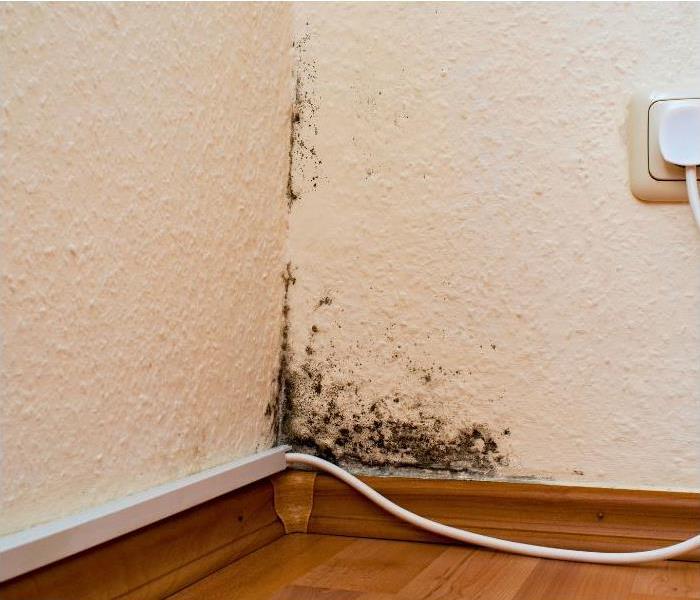 Prevent mold in Layton , UT
Prevent mold in Layton , UT
Mold is an unwelcome guest that can silently invade our homes, posing potential health risks and damaging the structure of the property. Layton, UT, with its diverse climate, is not immune to mold growth. Understanding what mold is, its potential dangers, and how to prevent it is crucial for homeowners in Layton and beyond. In this blog post, we will delve into the world of mold, its causes, and effective preventive measures tailored to the Layton, UT, environment.
What is Mold?
Mold is a type of fungus that thrives in damp and humid conditions. It reproduces through tiny spores that are invisible to the naked eye, floating in the air until they find a suitable surface to settle on. Once established, mold can grow rapidly, forming colonies and releasing mycotoxins that can be harmful to human health. The most common types of household molds include Aspergillus, Cladosporium, Penicillium, and the notorious Stachybotrys chartarum, also known as black mold.
Causes of Mold Growth
Understanding the factors that contribute to mold growth is essential for effective prevention. In Layton, UT, several elements can create an environment conducive to mold formation:
Humidity:
Layton experiences varying humidity levels throughout the year. High humidity, especially in the warmer months, can create conditions ideal for mold growth. Controlling indoor humidity is crucial in preventing mold.
Water Leaks:
Leaky roofs, pipes, or windows provide the moisture mold needs to thrive. Layton residents should regularly inspect their homes for potential leaks, especially after heavy rain or snowfall.
Inadequate Ventilation:
Poor ventilation can trap moisture indoors, fostering an environment suitable for mold. Proper ventilation in bathrooms, kitchens, and basements is vital to prevent stagnant air and excess humidity.
Flooding:
Layton, UT, occasionally experiences heavy rainfall and snowmelt. Flooding can result in water damage and create an environment conducive to mold growth. Promptly addressing and properly drying affected areas is crucial.
Condensation:
Cold surfaces in homes, such as windows and walls, can lead to condensation when warm, moist air comes into contact with them. This condensation provides a breeding ground for mold. Adequate insulation and temperature control can mitigate this risk.
Preventing Mold Growth in Layton, UT
Now that we understand the causes and potential dangers of mold, let's explore practical steps to prevent its growth in Layton homes:
Monitor and Control Humidity:
Use dehumidifiers to maintain indoor humidity levels below 60%. In Layton's climate, this is especially important during warmer months. Proper ventilation and air circulation also help prevent excessive humidity.
Regular Inspections:
Conduct routine inspections of your home, checking for leaks in the roof, walls, and plumbing. Promptly address any water damage to prevent mold from taking hold.
Effective Ventilation:
Ensure proper ventilation in high-moisture areas like bathrooms, kitchens, and basements. Install exhaust fans and open windows to promote air circulation and prevent stagnant air.
Proper Insulation:
Adequately insulate walls, floors, and windows to prevent condensation on cold surfaces. This helps control moisture and discourages mold growth.
Quick Response to Water Damage:
Act promptly in the event of water damage, whether from a leak or flooding. Thoroughly dry and clean affected areas within 24-48 hours to prevent mold colonization.
Regular Cleaning:
Regularly clean and dust your home to minimize the presence of mold spores. Pay attention to areas prone to moisture, such as bathrooms and kitchens.
Use Mold-Resistant Products:
When renovating or building, consider using mold-resistant materials in areas prone to dampness. These materials are designed to resist mold growth, providing an additional layer of protection.
Proper Landscaping:
Ensure that the landscaping around your home encourages water drainage away from the foundation. Proper grading and gutter maintenance can prevent water accumulation near your property.
Mold prevention is a crucial aspect of maintaining a healthy home environment, especially in regions like Layton, UT, where climate conditions can vary. By understanding the causes of mold growth and implementing practical preventive measures, homeowners can create an inhospitable environment for mold, safeguarding their property and the well-being of its occupants. Regular inspections, effective ventilation, and prompt responses to water damage are key components of a successful mold prevention strategy. Taking these steps will not only protect your home but also contribute to a safer and healthier living environment for you and your family in Layton, UT.
How To Treat Mold
9/13/2023 (Permalink)
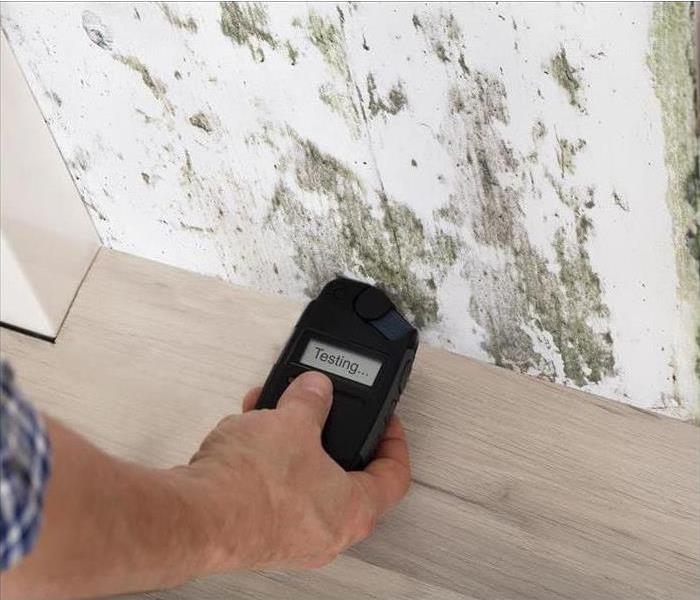 Mold testing in Layton, UT.
Mold testing in Layton, UT.
A musty odor in your commercial building in Layton, UT, is a clear sign of mold. What may not be clear is the visible presence of the fungus on your walls or ceiling. If you suspect you have mold but you can't see it, an indoor environmental specialist must test the building before remediation can take place.
6 Steps to Treat Mold
1. Detection
Some business owners try to locate problems themselves using a mold test from the local hardware store. The only thing this test will tell you, however, is that spores are present in the building, and that's always true. Any time the door opens, mold can enter on clothes, hair, and shoes. It doesn't become a problem until it concentrates and begins to grow on surfaces. Sometimes, you can't see the surfaces where it grows, though. Then you need a professional inspection.
2. Testing
A certified hygienist conducts tests on both surfaces and the air. These tests reveal more than just the presence of mold:
- Location of the greatest concentration of spores
- Type of mold present
- Air quality of the affected area
Once the testing is complete, the mold mitigation specialists know where to start.
3. Assessment
The report from the indoor environmental specialist is an essential part of the overall assessment process. It tells the remediation team members how large an area they need to seal off so that the mold problem doesn't spread any further in the building. From that point, they can create a plan of action for taking care of the issue. At this point, they should also be able to provide a general estimate to supplement your insurance claim.
4. Removal
One of the first things that technicians must do is tear out any unsalvageable material. If there is mold growth on any porous matter, such as drywall or industrial ceiling tiles, it cannot simply be washed away. The fungus on the surface isn't the only problem. When spores settle, tendrils called mycelia to reach down into the spaces beneath the surface to anchor the growth. Once this happens, the only way to get rid of it is to take the affected materials out altogether.
5. Retesting
After the growth has been removed, the remaining surfaces are cleaned and dried to prevent the problem from returning. Then the area must be retested. This crucial step of the process ensures that the actions taken by the mitigation team are effective and that no mold issue persists. Remediation must be completed before the structure can be rebuilt.
6. Restoration
The final phase is getting the building back to normal. New tiles and drywall are installed. Paint and wallpaper are matched to the existing space so that no one can tell where the problem occurred. The job isn't done until your building looks like there was never a problem at all.
If you suspect that you have mold in your building but you don't see any visible evidence, you should call an indoor environmental specialist. A professional test reveals what kind of problem you have and how big it is. This is exactly the information the mitigation team needs in order to do its job well.
How To Identify Black Mold
3/21/2022 (Permalink)
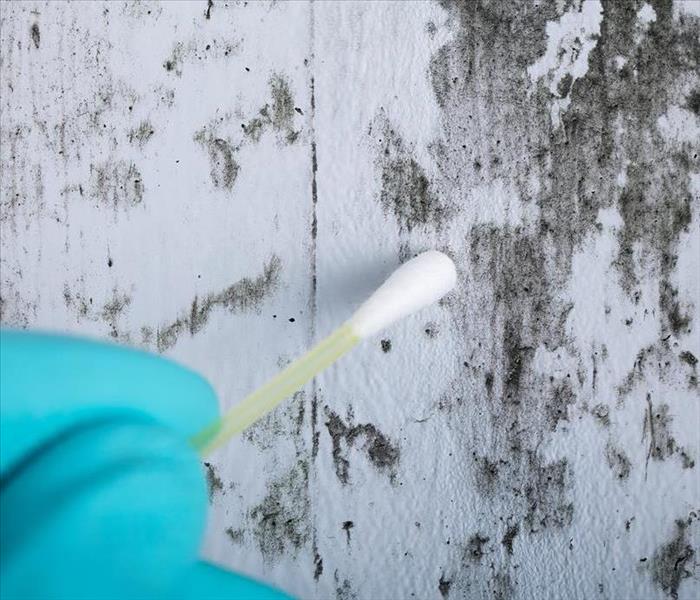 Follow These Tips, Identify Black Mold, and prevent Mold Damage in your Kaysville, UT Home.
Follow These Tips, Identify Black Mold, and prevent Mold Damage in your Kaysville, UT Home.
If your Kaysville, UT home has a musty, earthy smell, it’s a sure sign that there is mold growing somewhere. When there are no visible spots, getting a mold inspection done by a professional mold damage restoration company will determine the type of fungi that has invaded your home.
What Is Black Mold?
Although “black” may be in its name, Stachybotrys mold isn’t always that color.
Although typically dark, it can range from dark green to dark brown. In some instances, they have orange hues or white specks. Regardless of the color, it often appears fuzzy and grows in a long line like a stain. Nigrospora and Cladosporium are commonly found. They are dark in color.
Even if you don’t see the mold, its unique smell alerts you to a problem. The smell emitted actually comes from microbial volatile organic compounds, which are gasses produced during reproduction and feeding. As it continues to grow, it releases spores into the air. Once these microscopic spores are floating around, it may affect indoor air quality. This type of mold is most commonly found in the following areas:
- On or near cellulose materials, such as drywall and wood
- Damp areas, especially basements
- Behind walls and ceiling panels
- Condensation prone areas, such as the bathroom and kitchen
- Grout and sealants
Why Get a Mold Inspection?
When you find house mold, know you have a problem. When you can’t see it, you still know there is a problem. If mold is left to flourish, it may mean bigger problems down the road. Since mold spores find new places to build a new colony, the structure of the home is at risk. Large areas of mold eventually need to be replaced, which may get costly.
Calling a professional for an inspection helps ensure that doesn’t happen. Along with the expertise and tools to locate hidden mold, professionals will be able to create a plan of action to eradicate the problem and return your home back to like new. It is worth contacting a professional when:
- There is a musty, moldy smell that lingers but no visible mold.
- The home has experienced recent flooding, plumbing leaks or other moisture issues.
- Mold has been detected before and the homeowner wants to ensure the issue was properly taken care of.
- If it is a new home you are purchasing, there may have been undocumented water damage.
Any home, such as a vacation home, that has been unoccupied or closed up should get a mold test. Varying levels of humidity may have provided the right conditions for mold to form.
While finding or smelling any mold in your home is unpleasant, it is important to know what you are dealing with. A professional mold inspection helps provide those answers, along with solutions to solve the problem.
How Long Does Mold Removal Take? 3 Important Factors That Affect Time
9/7/2021 (Permalink)
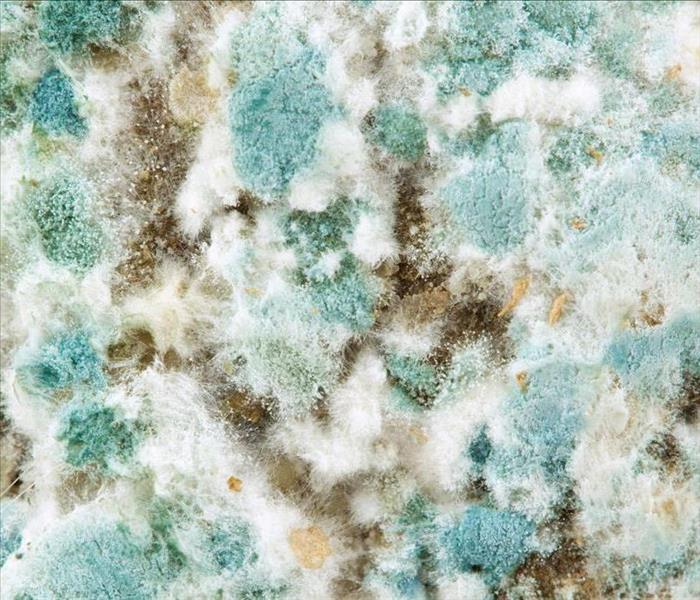 If you see signs of mold in your Layton, UT building, hire a professional to stop the damage.
If you see signs of mold in your Layton, UT building, hire a professional to stop the damage.
While every business owner hopes that mold removal will only take a day or two, the timeline varies. There are several factors that can influence the timeline, including:
- Type of mold
- Severity of the problem
- Underlying cause of the damage
A mold remediation specialist in Layton, UT, can help you determine a timeline. In most instances, however, the duration of the cleanup will be three to seven days.
Understanding the Extent of the Problem
Before you can properly address a mold problem, you need to determine the extent of it. Mold needs time to establish itself. The cleanup time depends on how long the mold has been growing and how long it took for the mold to become visible.
The proper way to address the issue is to recognize the nature of the problem and take the appropriate action. Although many business owners have been able to remove the moldy material from their buildings, exposure to airborne mold spores still exists.
When dealing with mold growth, especially when you do not know the variety, black mold, or some other variant, it is best to work with a professional. In some industries, commercial insurance might even require professional mold removal.
What Can Influence the Removal Timeline?
The age of the building. The older the building, the longer it will take to clear the mold. Older structures have many little holes and plumbing issues that allow mold to enter. Additionally, the material used to build the building can have an impact on the frequency of wet-dry cycles and other environmental conditions. You will also need to know whether the materials used in the construction of the property have a known lifespan.
Additionally, know the cause of the growth. A leak from a roof or other water-intrusion source can create the perfect conditions for mold growth. While you can search for causes on your own, seeking professional assistance is likely best.
How Long Does Removal Take in the Worst Case Scenario?
There are occasions when mold restoration may take much longer than you’d like. First, you need to consider the source of the mold problem. In many cases, you’ll need to hire a mold remediation contractor to determine the source of the mold. Secondly, the extent of the damage to the building’s structure and/or interior will also affect the timeline of the cleanup. After determining the cause of the mold problem, the remediation specialist will determine the best way to address the problem. You may need to hire a team of specialists in your area to remove the mold from the building and clean the building’s interior.
Mold remediation is something that most business owners take seriously. It can be a daunting task, the important thing to remember is that it is preventable. A number of measures, such as using dehumidifiers, sealing cracks, and keeping your property clean can help keep mold at bay. It’s also a good idea to seek the assistance of a mold remediation specialist in Layton, UT.
Mold removal professionals have the knowledge and skills necessary to tackle the challenges of a cleanup. They are also your best hope for getting back to business quickly.
5 Types of Mold That Can Grow in Your House
6/28/2021 (Permalink)
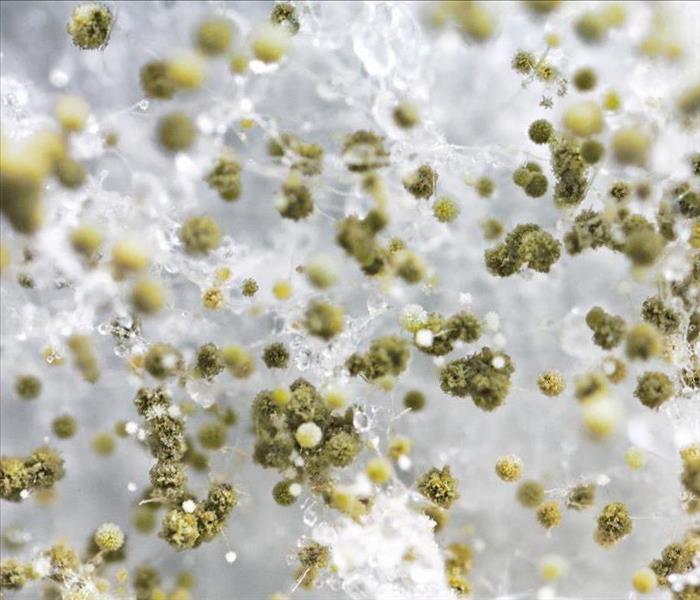 The most favorable conditions for mold growth are moisture and darkness.
The most favorable conditions for mold growth are moisture and darkness.
Mold is a type of fungus that is present in nearly every environment, including your home. Most homeowners have probably heard of black mold because of media attention. However, there are actually many different types of mold growth that can occur in your home.
1. Acremonium
This mold usually grows in humidifiers, drain pans, window seals, cooling coils, and other high humidity environments. It begins as a small, moist mold that later becomes fine and powdery. It is usually grey, pink, white, or orange in color.
2. Aspergillus
This type of mold growth is one of the most common household molds. There are more than 185 species of this mold that come in a variety of different colors. Its long, flask-shaped spores can form thick layers on surfaces.
3. Chaetomium
This variety commonly occurs in homes that have water damage. It has a texture that is similar to cotton and changes color from white to grey to brown and then black as it gets older. Common locations for this mold include leaky roofs, sinks, and basements. It gives off a musty odor.
4. Fusarium
Fusarium also grows in water-damaged homes and can continue growing in cold temperatures. It is often found in wallpaper, carpeting, and other fabrics. It is usually white, pink, or red and sometimes grows on food or in compost.
5. Penicillin
This type can be identified by its distinctive green or blue surface and velvet-like texture. This mold is often discovered in buildings with water damage in Layton, Utah, while the mold remediation is being performed. It spreads quickly and often grows in wallpaper, ducts, mattresses, and carpets. As with many types of mold, it is important to eliminate sources of excess moisture to get rid of it.
These are just a few of the many types of mold growth you may find in your home. Whatever type of mold you have, it is important to have prompt mold remediation done to address the issue before more damage occurs.
What To Do While You Wait for Mold Mitigation
3/19/2021 (Permalink)
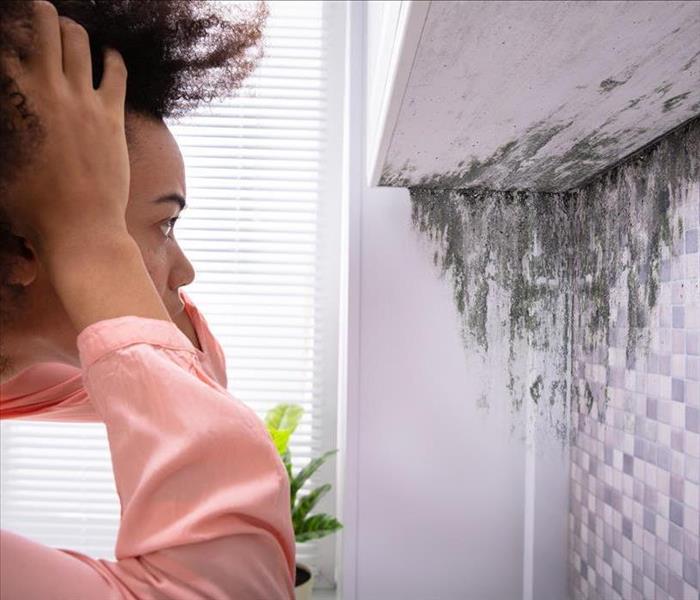 Black mold can get out of control quickly.
Black mold can get out of control quickly.
The musty odor in your home alerts you to a problem. Even if you can't see it, black mold can get out of control quickly if you don't have it mitigated properly. While mold remediation specialists in Layton, UT, are likely to arrive within hours of your call, there are some things you can do in the meantime to stop the spread.
2 Things To Do To Stop the Spread of Mold
1. Control Moisture
If you have mold growth in your home, a moisture problem is probably how it got started. There are several ways that excess moisture can increase the likelihood of fungus issues:
- High humidity
- Standing water
- Unresolved water damage
- Hidden leaks
Try to address these problems to the best of your ability. For example, you can use a dehumidifier to ensure that your home remains at a 40-50% humidity level, and watch your water bill so that you notice unexplained spikes in usage that may indicate a water loss. The more you can control the moisture in your home, the less likely the black mold growth is to spread.
2. Stop Air Flow
The seemingly logical thing to do when you want to lower humidity is to increase the air flow through your home. If you already know you need mold cleanup or suspect you have a fungus issue, however, that can actually make the problem worse. Spores travel by air. If you turn your HVAC unit on high, it is likely to spread the concentrated spores into other areas of your home. What you need to do instead is turn off the unit completely. If you know where the mold is growing, try to seal off that part of the house by closing vents and doors. The more you can keep the concentrated mold contained, the smoother the cleanup process is going to go.
Black mold can multiply in your home quickly, so your primary task is to call the experts as soon as possible. Then control moisture and protect the rest of the house from air flow from the affected area to prevent spread.
Why You Should Always Call a Mold Removal Specialist
1/22/2021 (Permalink)
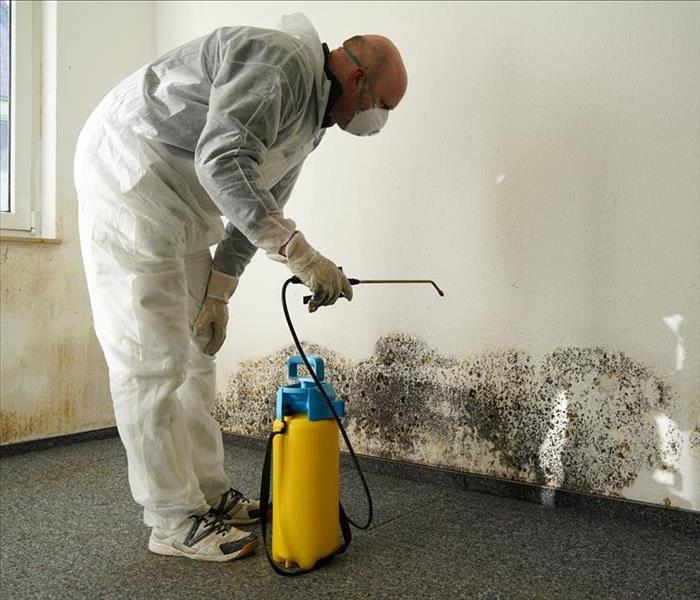 Always contact a mold remediation specialist.
Always contact a mold remediation specialist.
People often underestimate the complexity of mold cleaning, assuming that all removals are the same and require little skill or knowledge of the numerous fungal species in existence. While some mold infestations do require little expertise, these occurrences are often few and far between. It is better to contact a mold remediation specialist in Layton, UT, to handle a mold problem, regardless of the problem's apparent size, for three specific reasons.
3 Reasons to Always Contact a Mold Remediation Specialist
1. Appearances Are Deceiving
A homeowner will often see a little bit of mold or discoloration on a basement or laundry room wall and incorrectly assume that it is only surface mold. Removing surface mold is necessary and expected in bathrooms or high-moisture areas, but mold cleaning a surface is different from mold removal. While only a little bit of mold shows on the surface, there can be a more significant issue behind the wall. Think of mold like an iceberg, where only 10% shows above the surface of the water.
2. Improper Disposal Can Intensify Infestations
Depending on the severity of the infestation and the species mold damage, removal can make matters worse. When a room is highly contaminated, any mold pocket movement can release spores into the room and home, especially if certain precautions were not taken. Professionals understand the level of caution required with different species and circumstances.
3. Underlying Problems Require Resolution
If you have a mold problem in your home, it is crucial to find the source or cause of the problem. In most situations, the mold collects near areas of moisture, typically stemming from water line leaks or breaks. The leak does not need to be severe, especially if it is steady. If the moisture problem is not corrected, you can expect the mold to return.
DIY mold cleaning is never a good idea. Without the proper knowledge, you can make the situation much worse. It is best to contact a remediation professional if you suspect mold damage.






 24/7 Emergency Service
24/7 Emergency Service







